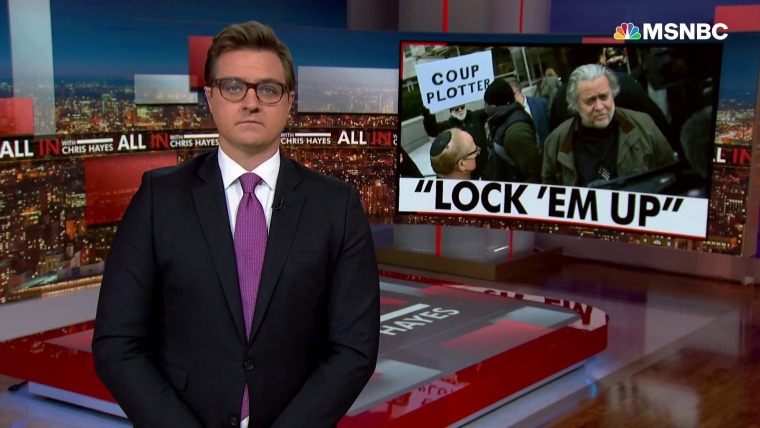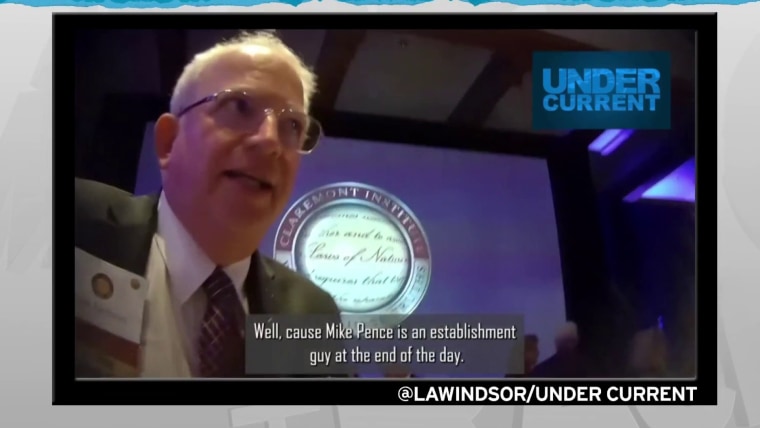After losing the 2020 presidential election, former President Donald Trump was obsessed with finding a route to remain in power. In September, we learned that John Eastman, a conservative lawyer working with Trump’s legal team, went so far as to write a two-page memo for how to throw out President Joe Biden’s win before Congress could certify it in January.
And in the last week, we’ve learned that Eastman wasn’t alone in taking notes on a criminal conspiracy. At least two other people prepared memos to justify Trump’s reinstallation as president. This collection of memos shows more clearly than ever that those closest to the former president were dedicated to finding some loophole to keep him in power. Their mentally thin, ultimately self-serving assertions acted as fuel to Trump’s delusions, which he then passed on to his followers — most spectacularly, of course, at his rally ahead of the riot on Jan. 6.
In the last week, we’ve learned that Eastman wasn’t alone in taking notes on a criminal conspiracy.
Both of the most recent revelations come via ABC News correspondent Jonathan Karl, who’s promoting his addition to the string of books about the end of the Trump presidency: “Betrayal: The Final Act of the Trump Show."
ABC News first reported Sunday that White House chief of staff Mark Meadows emailed Vice President Mike Pence’s chief of staff on Dec. 31 to pass on a memo from Trump campaign lawyer Jenna Ellis. Ellis — whom you may recall from her many failed attempts to reverse the election in court — “outlined a multi-step strategy,” according to Karl:
On Jan. 6, the day Congress was to certify the 2020 election results, Pence was to send back the electoral votes from six battleground states that Trump falsely claimed he had won.
The memo said that Pence would give the states a deadline of "7pm eastern standard time on January 15th" to send back a new set of votes, according to Karl.
Then, Ellis wrote, if any state legislature missed that deadline, "no electoral votes can be opened and counted from that state."
That scheme aligns with one of the scenarios that Eastman laid out in his longer Jan. 3 memo. And at first glance it seems like a valid off-ramp that would let Trump save face and allow time to investigate the “fraud” that he had alleged. It’s not dissimilar in that sense from the arguments that Sens. Ted Cruz, R-Texas, and Josh Hawley, R-Mo., made in their refusal to vote to certify the election.
Crucially, though, the plan’s real goal depended on another plot that was underway inside the Trump administration. The Justice Department was under pressure in the weeks after the election to issue a letter to the states Trump falsely claimed to have won declaring that there was enough “significant concern” of fraud to warrant special sessions of their legislatures. Those legislatures controlled by the GOP — like Georgia’s and Arizona’s — would then provide the electoral votes needed to put Trump over the top under Ellis’ proposal.
More important than the accuracy of any of the theories in these memos is the fact that they exist at all.
Ellis’ idea, harebrained as it was, at least seemed more sensible on its face than the other memo from Trump’s inner circle that Karl revealed last week. In another excerpt from his book, this time in The Atlantic, Karl published a memo from John McEntee, the head of presidential personnel. McEntee, in his eight-point text message to Pence’s chief of staff, argued that none other than Thomas Jefferson had used his position as vice president to secure the election of 1800.
This is nonsense on multiple levels. First of all, the mystery around the supposed discrepancies that McEntee described in his memo has long since been resolved. Law professors Bruce Ackerman and David Fontana investigated the possibility of a Jeffersonian scheme to snatch the presidency for himself and, looking at the Georgia electors’ ballot themselves, found no evidence of foul play.
Second, unlike the scenarios that Trump’s lackeys dreamed up, there was no dispute over who’d won Georgia in 1800. All the reporting from the state indicated that they’d prevailed in the vote on Election Day. And Georgia’s congressional delegation, which included two Federalists, accepted the results, which it wouldn’t have done quietly, Ackerman and Fontana argued.
There’s a certain amount of grasping at straws in each of these two newly revealed memos. Both feature unserious logic trains that would fall apart under close judicial scrutiny. But more important than the accuracy of any of the theories in these memos is the fact that they exist at all.
Whether we like it or not, there are numerous loopholes and vagaries in our method of choosing a president. None of them have been remedied since 2020. And there are now multiple examples for the next would-be coup leader to draw from when exploiting the flaws inherent in the electoral system. If anything, Republican-controlled states have been moving to codify those flaws for their own benefit, making it easier for legislatures to overturn the will of the people.
If they’re not fixed before 2024, the chances are much higher that everyone in the GOP, from local election officials to members of Congress, will be singing from the same hymnal when it comes to turning these fantasies into reality.
The memos’ existence does have an upside, though: The Jan. 6 committee now has a new line of questioning for people like McEntee and Meadows when they eventually are made to answer the subpoenas against them. And Democrats can and should spend the next year using these memos as a checklist against any future Trumpian grab for power.


